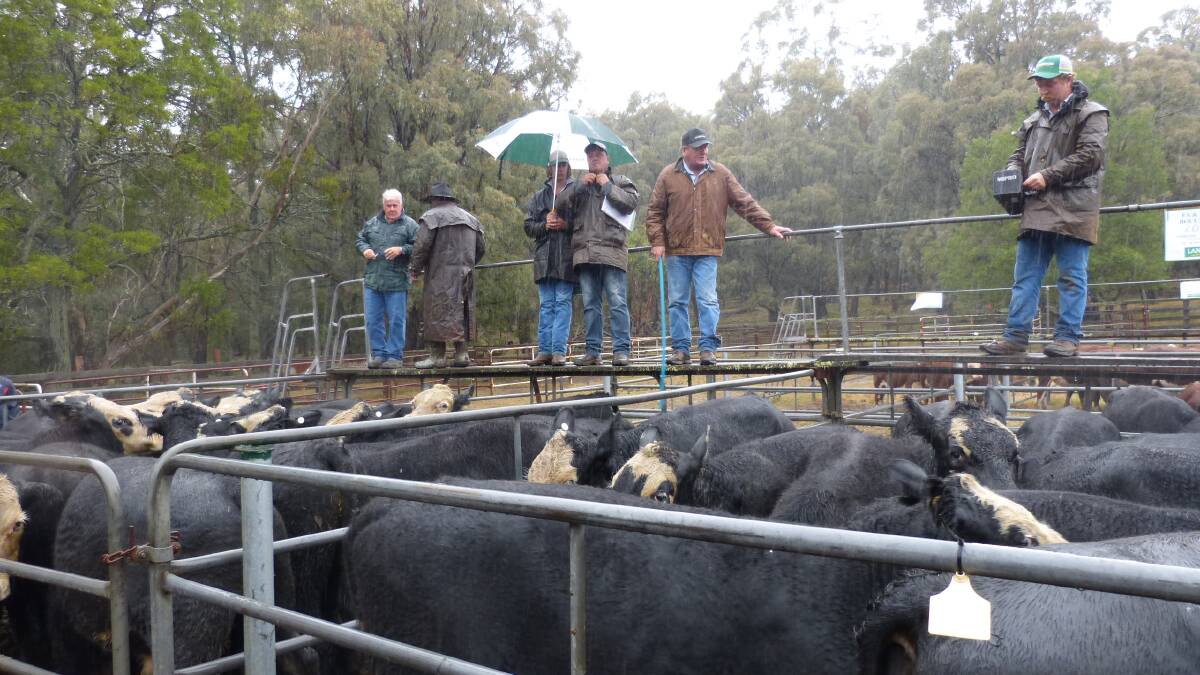
WHILE rainy conditions are adding an element of volatility to the cattle market whereby supply will likely come in bursts of dry weather windows, all signs are that demand for restocking cattle is still very strong.
Subscribe now for unlimited access to all our agricultural news
across the nation
or signup to continue reading
Most agents feel the next ten weeks at least will only see strength in the market, given both the ability of producers to hold stock and put more weight on and the demand from those wanting to refill paddocks.
The feeling is there could be a large number of buyers who have been holding off in anticipation of increased supply and downward price pressure who will need to make a move very soon.
The benchmark Eastern Young Cattle Indicator has continued to edge up over the past week, sitting today at 1069 cents a kilogram carcase weight, up 29c over the week, 38c on four weeks ago and 38c on the year-ago level.
The feeder steer indicator is also up 18c/kg liveweight on four weeks ago, but heavy steers have dropped 10c.
ALSO IN BEEF:
Senior market analyst with Meat & Livestock Australia Ripley Atkinson said with pasture growth improving rapidly, many producers were opting to keep stock on farm, add kilograms and improve their margins.
That, combined with wet weather limiting the ability of vendors to get cattle to market, was reducing supply, he said.
Numbers had been down across the Eastern Seaboard for the past few weeks.
That has clashed with spring typically being a strong demand period and the ongoing herd rebuild to retain strength in prices, Mr Atkinson said.
Nutrien's livestock lead for the south-east region Adam Mountjoy said saleyard prices from Tasmania to northern Victoria had really hit their straps in the past few weeks, with reduced numbers in both prime and store sales.
It had simply been too wet to yard a lot of cattle, he said.
"We are anticipating a large influx in the second half of October but in saying that we have tremendous growing ability here at the moment - cattle are putting on weight easily - so demand for restocking and breeding cattle is at a premium and will likely remain that way," Mr Mountjoy said.
"With every kilogram worth a lot right now, there is certainly incentive to make those weight gains."
Online, the tight supply has started to loosen somewhat, with numbers jumping 10 per cent last week but chief market analyst at AuctionsPlus Tim McRae said it would likely only be a gradual increase.
AuctionsPlus was still around 3000 head lighter than the same period last year, he said.
"People simply have the flexibility to hold onto stock," Mr McRae said.
"This time last year, we had far greater supply but prices were at same level. That's an indication there might be a lot of buyers out there patiently sitting on their hands and when the feed really explodes, there will be a big chase for light steers.
"There is certainly nothing to indicate the demand that was there last spring won't be the same again this year."
Talk about a possible bottleneck later in the year due to restricted kill space is still evident, however Mr Mountjoy said the fact producers were currently in the fortunate position of being able to retain stock was a big positive for the industry.
There are no signs of any easing of the dire predicament of processors, who are battling big cost increases and a labour crisis.
Modeling from Thomas Elder Markets shows processor margins have eroded further into negative territory with the September losses sitting at $377 a head so far. That puts the annual average loss at $298.
TEM's Matt Dalgleish reported a comparison of the annual cattle slaughter levels to the average annual margin highlights that the current level of beef processor losses are beyond what would be anticipated.


